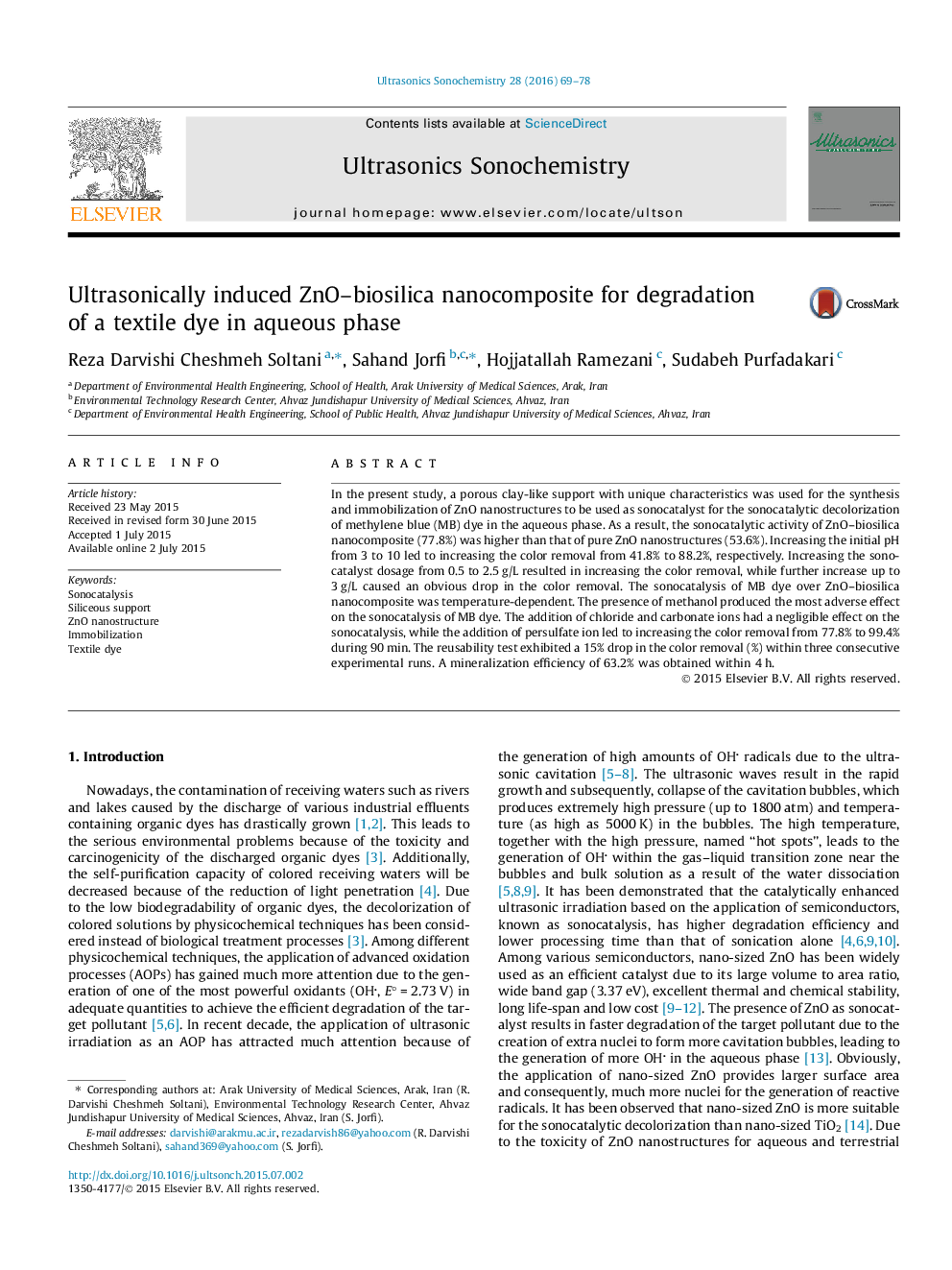| کد مقاله | کد نشریه | سال انتشار | مقاله انگلیسی | نسخه تمام متن |
|---|---|---|---|---|
| 1266542 | 1496876 | 2016 | 10 صفحه PDF | دانلود رایگان |

• Synthesis and immobilization of ZnO nanostructures on the biosilica surface.
• Characterization of the nanocomposite by FE-SEM, TEM and XRD analysis.
• Application of ZnO–biosilica in sonocatalytic removal of an organic dye.
• Enhanced sonocatalysis of the dye due to the application of biosilica as support.
In the present study, a porous clay-like support with unique characteristics was used for the synthesis and immobilization of ZnO nanostructures to be used as sonocatalyst for the sonocatalytic decolorization of methylene blue (MB) dye in the aqueous phase. As a result, the sonocatalytic activity of ZnO–biosilica nanocomposite (77.8%) was higher than that of pure ZnO nanostructures (53.6%). Increasing the initial pH from 3 to 10 led to increasing the color removal from 41.8% to 88.2%, respectively. Increasing the sonocatalyst dosage from 0.5 to 2.5 g/L resulted in increasing the color removal, while further increase up to 3 g/L caused an obvious drop in the color removal. The sonocatalysis of MB dye over ZnO–biosilica nanocomposite was temperature-dependent. The presence of methanol produced the most adverse effect on the sonocatalysis of MB dye. The addition of chloride and carbonate ions had a negligible effect on the sonocatalysis, while the addition of persulfate ion led to increasing the color removal from 77.8% to 99.4% during 90 min. The reusability test exhibited a 15% drop in the color removal (%) within three consecutive experimental runs. A mineralization efficiency of 63.2% was obtained within 4 h.
ZnO nanostructures were synthesized and immobilized on biosilica, a microscopic siliceous material with unique porous structure, in order to increase their catalytic activity and reusability potential for removing azo dye molecules from aqueous phase via sonocatalysis. The ZnO–biosilica nanocomposite was more efficient than that of pure ZnO to adsorb the light irradiation generated during the cavitation, producing the higher amounts of OH radicals for the degradation of azo dye molecules.Figure optionsDownload as PowerPoint slide
Journal: Ultrasonics Sonochemistry - Volume 28, January 2016, Pages 69–78